In what cases is embryo replanting canceled during IVF? Carrying out replanting of embryos during IVF.
In vitro fertilization is a complex method of treatment, one of the stages of which is the replanting of embryos. In IVF, before embryo transfer, a woman undergoes the necessary examinations, takes treatment aimed at curing chronic infections and replenishing hormone deficiency. Thanks to the treatment, a favorable hormonal background is created for the growth of the endometrium, which creates favorable conditions for a successful pregnancy and embryo development.
Preparing for Embryo Transfer
Before transferring embryos in IVF, they must be prepared. To date, 2 methods of embryo preparation are known: assisted hatching and pre-freezing. Embryo hatching is the chemical or mechanical weakening of the shell of the fetal egg in which the embryo is located. This procedure facilitates the easy exit of the fetal egg from the shell, after which it is attached to the uterus.
Vitrification of embryos (freezing in liquid nitrogen) is the second method of preparation for transfer. The procedure consists in the treatment of embryos with liquid nitrogen at a temperature of -196°C. At the same time, 30% of the embryos do not tolerate freezing and die, the rest retain the ability to grow and develop and can be stored frozen for several years ().
What day does the embryo transfer take place?
Embryo transfer during IVF is carried out in 2 stages: on days 2 and 5 or on days 3 and 5: this is decided individually in each case. The chosen dates are expedient for the reason that it is on the 5th day that the implantation of the fetal egg occurs during natural fertilization.
How does embryo transfer take place?
The IVF embryo transfer procedure is quite simple and painless, and takes no more than 10-15 minutes. A gynecologist, under ultrasound control, inserts a catheter into the uterine cavity through the cervical canal, through which the embryos are transferred. After the procedure, the woman should be in a horizontal position for an hour. Physical activity should be avoided and more lying down while on  the long-awaited 2 strips will not appear on the pregnancy test.
the long-awaited 2 strips will not appear on the pregnancy test.
How many embryos should be transferred?
According to official data, the transfer of two embryos during IVF is optimal. But if the doctor has doubts, then 3 or even 4 can be implanted. If several embryos take root after embryo transfer during IVF, the risk to life and pregnancy increases significantly, especially since women with health problems, sometimes unexplained, get into IVF, that prevent them from getting pregnant naturally. Therefore, in most of these situations, doctors produce.
In vitro fertilization is one of the methods of assisted reproductive technologies. It can be said that this method of ART is a method of overcoming, and not a treatment.
Causes of infertility
Infertility can be caused by various reasons. One of them is the presence of factors that prevent the fusion of the sperm and the egg. During in vitro fertilization, the union of male and female germ cells occurs outside the body, in laboratory conditions - in a test tube, after which the embryos are transferred to the patient's uterus.
Embryo transfer
The transfer of embryos into the uterine cavity of a woman is a responsible and critical stage of the IVF program. The questions that arise at this stage are:
1. Which embryos should be transferred?
2. How many embryos should be implanted during IVF?
3. When should embryos be transferred?
The embryo rearing period usually lasts 2-5 days. During this time, an embryologist monitors their development, selecting specimens as much as possible. good quality- according to morphological criteria, for replanting. However, morphology does not always reflect developmental potential and genotype. For example, when only medium quality embryos are available for transfer, the chances of pregnancy are much lower, but if it does occur, the baby will be born healthy. This is due to the fact that embryos various pathologies, as a rule, are not implanted in the uterine cavity, or the pregnancy is terminated for early dates(first trimester).
How many embryos?
How many embryos should be implanted during IVF? This question is one of the most difficult moments that the patient and the doctor face. The chance of pregnancy is higher if more embryos are transferred into the uterine cavity. However, this increases the chances multiple pregnancy which can lead to various complications. The issue is further complicated by the fact that there is also the possibility of each embryo dividing into two, and this leads to the birth of identical twins.
The age and ovarian reserve of the patient also matter. If a donor egg is used for IVF, then a maximum of 2 embryos are implanted, regardless of the woman's age.
Today, in most clinics, the following option is practiced: women younger than 38-40 years old are usually implanted with no more than two embryos, and older than 40 - no more than three.
When should you transfer?
This question is decided by an embryologist. Usually, the transfer day depends on the quantity and quality of the received embryos. It is believed that the chance of pregnancy is high with the replanting of blastocysts, but the probability of three-day-old embryos to grow to this stage is 40%. At the same time, if the replanting is postponed (after 3 days), there is a risk that the embryos may stop developing, and then the IVF procedure fails, since there is nothing to transfer.
Given all this, in many clinics it is accepted:
1. If the number of embryos is less than 3, then replanting is done on the third day.
2. If the number of embryos is more than 5, and they are of good quality, then replanting is done already at the blastocyst stage (day 5).
A compromise is the option of double embryo replanting. In reproductive centers, double transfer is often used, since the frequency of a positive result (pregnancy) is 51%, and the frequency of multiple pregnancies does not increase.
Modern life dictates dynamic development, and the flourishing of the industry invariably entails losses in the natural balance of man and nature. Increasingly, situations arise when a married couple cannot conceive a baby only by joint efforts. Sometimes the diagnosis of one of the spouses sounds like a sentence, but even the absolute health of the partners does not guarantee that the union will be rewarded with a long-awaited child.
When is IVF indicated?
It is prescribed no earlier than the examinations carried out confirm the impossibility of conception. Attempts to treat infertility are often delayed for many years, but the unproductive duration of the process can only reduce the likelihood of a favorable outcome. Seeing the ineffectiveness of the measures taken, a married couple has the right to insist on an IVF procedure already two years after the start of treatment.
How does the embryo develop?
After fertilization, the egg is placed in a comfortable liquid environment, close in characteristics to the natural maternal one. The transformation of an ordinary egg into a zygote, that is, a single-celled embryo, does not yet complete the process. Prior to embryo replanting during IVF, repeated cell division must occur under the constant supervision of an embryologist, who notes each new stage body development.
Starting from the second day from the fertilization of the cell, the doctor can already give a report on the compliance of the embryo with the parameters of the norm. Sometimes, if it is weak but viable, it is allowed to grow in an artificial environment until the formation of a blastocyst (this happens on the 6th day), and only then is it introduced into the uterine cavity. Such reinsurance is justified by reducing the risk for the mother, since it excludes the formation of several fetuses in the womb, and therefore minimizes the burden on the body.
With normal cell division, the allowable holding period for embryos is three days. After that, some of them, but no more than two, are transferred to the patient's body, and the strongest specimens of the remaining ones are frozen in liquid nitrogen. But how does embryo transfer occur during IVF? 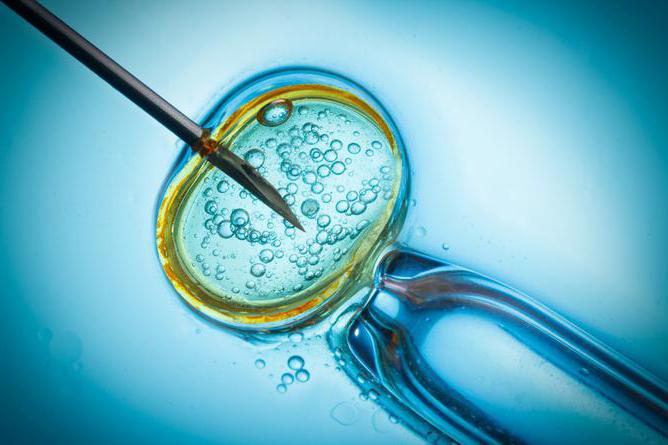
Preparing a woman for an embryo transfer procedure
The very decision to become a mother in a difficult way of replanting an embryo during IVF is a sufficient reason for a woman to reconsider her diet and daily routine. It is from the healthy immunity and strong nervous system of the expectant mother that the success of the procedure depends.
A few weeks before the date of egg retrieval, a woman is shown a protein diet with a minimum amount of fat and a complete exclusion from the menu of sweet starchy foods, as well as dishes containing soy protein and genetically modified elements. It is recommended to drink more pure water, natural fresh juices without artificial additives. From fruits, it is better to give preference to fresh pineapples (if there is no allergy).
Directly on the day of implantation of the embryo into the uterus during IVF, it is desirable to stimulate blood circulation in the pelvic organs, for which doctors advise the spouses to have sexual contact and only then, after the woman has performed hygiene procedures, get ready for implantation.
Two hours before the scheduled replanting time, the woman needs to take a Piroxicam tablet. Going to IVF, it is better to calm down, remember that the technology of embryo replanting during IVF is painless and not traumatic. 
embryo transfer procedure
The woman does not see how the embryo is being prepared for transfer, so she may not know that the shell of the embryo is deliberately damaged before implantation to facilitate the release of the egg. The procedure is called "hatching" and it is mandatory.
So how does IVF embryo transfer work? After talking with the doctor, the woman takes a comfortable position on the gynecological chair. At the same time, it is better for her to relax and close her eyes, and not to worry, watching how the embryo transfer is done. In IVF, the patient's willingness to remain calm is of great importance. The catheter, which the doctor inserts into the cervix, guided by ultrasound observation, does not cause serious discomfort if the pelvic muscles are relaxed and immobile.
Judging by the numerous female reviews, embryo replanting during IVF takes place, as was indicated in the preliminary conversations: painlessly and in an atmosphere of careful attitude of the staff. After removal of the catheter, the patient is asked to lie down on the couch on her back and spend a little less than an hour in this position. During this time, the embryologist will examine the viable embryos remaining in the catheter tube and, if the patient agrees, send them to 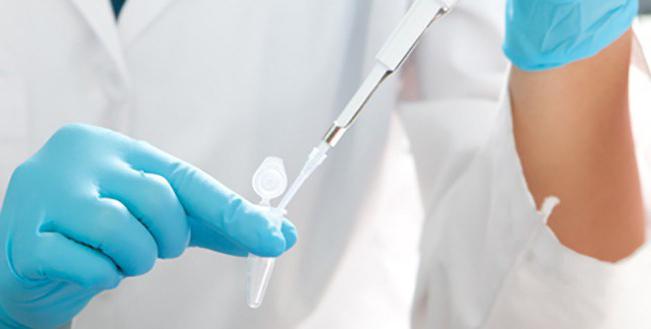
What is cryopreservation
Having received the prior consent of the couple, only strong and hardy specimens are selected from among the fertilized cells, those that will be able to survive under the stressful conditions of the subsequent defrosting. The more embryos that are cryopreserved, the more likely a woman will be to restart IVF on her next attempt, which may be years later.
Freezing of embryonic cells occurs at extremely low values of the mercury column, strictly -196 0 С. Since the procedure for treatment with liquid nitrogen and the subsequent rehabilitation of the embryo is a kind of hard hardening in the conditions of an uncompromising struggle for life, it is often more successful to re-plant embryos during IVF using thawed cells for woman. 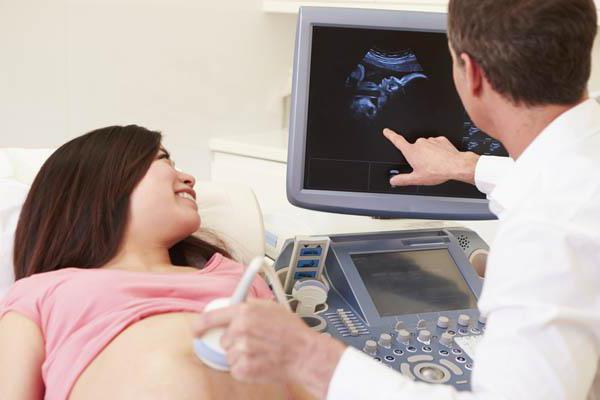
Adaptation after replanting
Starting from the moment a woman leaves the doctor's office, the most important thing for her in the next three days is peace. The mode after replanting IVF embryos within 72 hours provides for the practical immobilization of the patient. Even with rare getting up in the toilet room, the physical support of the husband is desirable in order to minimize the rush of blood to the pelvis. Water procedures on the first day are contraindicated!
The diet is discussed with the doctor in advance, but if the woman is healthy and does not have any special prescriptions, then after embryo replanting during IVF, you can eat everything that you used to, but with an emphasis on natural products, and, of course, without including coffee, fatty or large amounts of coffee in the diet. flour food.
After three days of lying down, the stage of moderate activity begins. Without sudden movements, a woman can carefully perform elementary household actions, walk on the street, avoiding any experiences. At this stage, it is important to drink plenty of pure non-carbonated water. 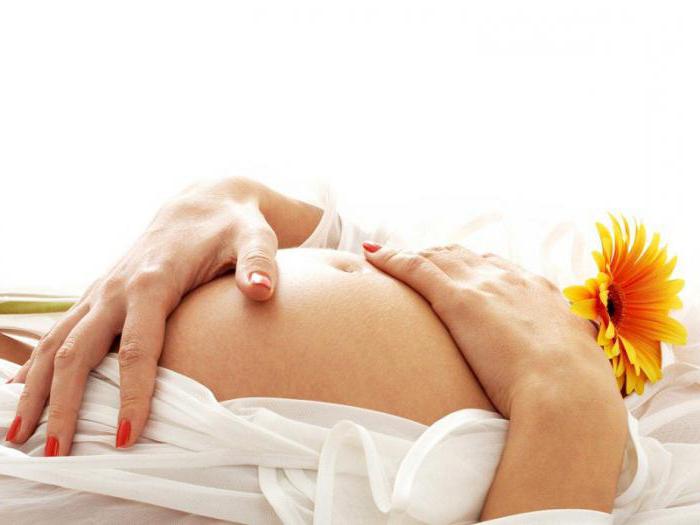
Control
In the first days after embryo transfer, a woman often faces the problem of fever, but if you remember the essence of the intervention in the body, the reaction of the immune system will become clear. The thermometer should not be lowered if the mercury column does not rise above 37.6 0. It is necessary to let the body “learn” new information on its own and come to terms with the fact. In the next visit to the doctor, such a phenomenon is recorded and analyzed.
You need to be careful about the prescribed injections. There will be three drugs in total (with a standard appointment): two injections of Utrozhestan on the night after the procedure, one injection of Progesterone in the morning and only five injections (according to the schedule) of Fragmin, responsible for normal blood circulation in the pelvic organs. "Fragmin" may be excluded from this list if, according to the results of the coagulogram, the patient's blood clotting does not deviate from the norm.
Body behavior as a consequence of the IVF procedure
The panic of women when they encounter phenomena after a puncture that seem incomprehensible to them is due to low information content. Below is a list of such phenomena, as well as options for the correct response to them:
- Drawing, obsessive pain in the lower abdomen after the procedure, as during menstruation, is the absolute norm. Nothing extra should be taken.
- Vaginal discharge in the form of a pinkish liquid on the 6th-12th day after the embryo transfer is an expected and desired phenomenon, indicating that the implant has fixed on the uterine wall. It is normal if bleeding of this kind lasts no more than 4 hours. The doctor must be informed about the situation and conduct an examination in order to correctly assess the patient's condition.
- Excessive bleeding or discharge of a thick color signal an unsuccessful replanting and the need for urgent hospitalization. In rare cases, urgent measures taken save the pregnancy.
Exactly two weeks after the puncture, a test for (hCG) is performed. The results are issued on the same day, and the woman can congratulate herself if the concentration of this important hormone is increased. Sometimes the hCG test requires a repeat after 72 hours; such control is due to the presence of a weakly expressed concentration.
Seven days after donating blood for the hormone (with a positive answer), an ultrasound is performed, stating the onset of pregnancy. After another 14 days, the second is appointed - to assess the development of a fixed fetus.
In the case of negative HCG, the medication to maintain the IVF result is stopped.
Critical days, which should go on the 5th-7th day, serve as a certain indicator of a failed replanting attempt. 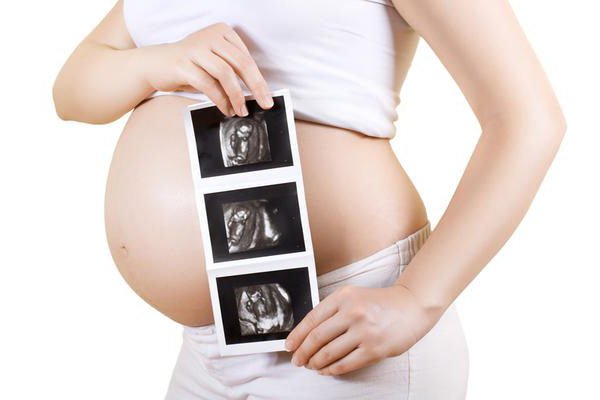
What can affect the outcome of replanting
Fibroids are a frequent factor that complicates the attachment of the embryo to the uterine wall. The replanting of 1 IVF embryo in this situation is carried out in such a way that the zygote is not near the tumor, which tends to grow. Other important conditions for the favorable survival of the embryo in the mother's body are the right time (usually on the 20th day of the cycle) and the optimal maturity of the fertilized cell. If other terms are set by doctors, you should take it calmly, since the body does not always work with the accuracy of the clock, and the nuances that take into account the individuality of the woman can determine a good outcome.
But even in the case of a negative test, you should not assume that the joy of motherhood is not for you - the real success rate after the first attempt rarely exceeds 45%. It may be necessary to slightly change the diet or give up bad habits if this has not been done before, and be sure to try again using germ cells after cryopreservation.
The most important stage of in vitro fertilization is the transfer of embryos into the uterine cavity. It is with this that many discussions and experiences of future parents are connected. Everyone cares main question: how many embryos should be implanted during IVF? Some believe that it is optimal to transfer 1 embryo, others - 2 or more. In this situation, first of all, a woman should trust the reproductive specialist. The doctor, taking into account the individual characteristics of the female body, will help to make right choice.
Preparing for IVF Embryo Transfer
Before implantation takes place, future mom must undergo appropriate examination. If any pathologies are found, the first step is treatment. You should also replenish the necessary level of hormones. A favorable hormonal background creates a prerequisite for the growth of the endometrium, which greatly increases the chances of engraftment of the embryo and a successful pregnancy.
Before implantation, embryos are prepared in two ways:
- Freezing (vitrification). The embryo is treated with liquid nitrogen. The temperature at the same time reaches - 195 degrees. Not all embryos can tolerate such conditions, 30% of them die, this is the disadvantage of the procedure. The rest can actively develop and grow.
- Auxiliary hatching. The procedure involves a mechanical or chemical effect on the shell of the embryo. As a result, it weakens, which contributes to the easy release of the fetal egg and its attachment to the uterus.
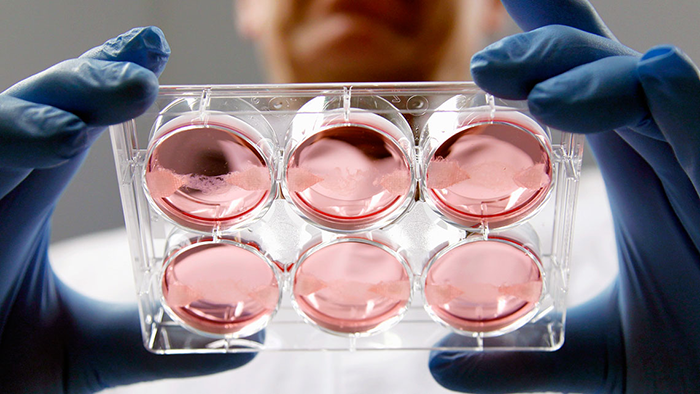
Embryos are transplanted on days 2 (or 3) and 5. Everything is decided individually. Why these days? Because with natural conception, the implantation of the embryo occurs on the 5th day.
How many embryos are transferred?
To the question: how many embryos are implanted during IVF? Reproductologists clarify - everything is individual. However, in most cases, when deciding how many embryos it is better to implant during IVF, 1 or several, preference is given to the second option. In general, the transfer of two fertilized eggs is considered optimal. But the doctor may decide to transfer three or even four embryos. It all depends on the state of the woman's reproductive system.
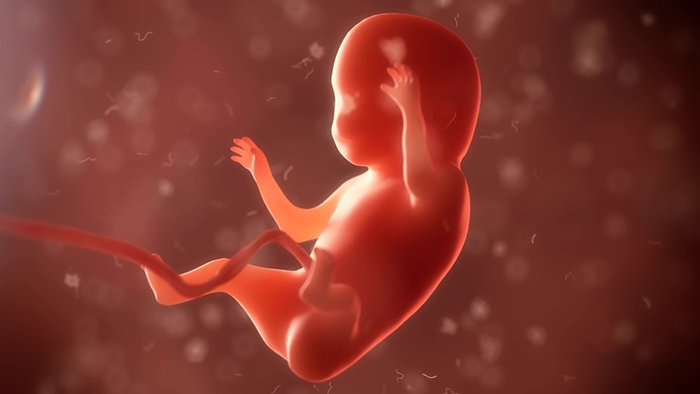
Important! If two or more embryos take root at the same time, then the risk of miscarriage increases significantly. Indeed, not always healthy women seek IVF help, and carrying a multiple pregnancy will only increase the chances of its failure. Therefore, doctors in this case carry out a reduction.
How is embryo transfer going?
The embryo transfer procedure is fully controlled by ultrasound. It is worth clarifying that the replanting of fetal eggs itself is not yet a pregnancy. This will happen when they are implanted. Their further development is no different from natural conception. The only difference is that during in vitro fertilization, several embryos can be implanted at once. Dead and non-survivors are removed.
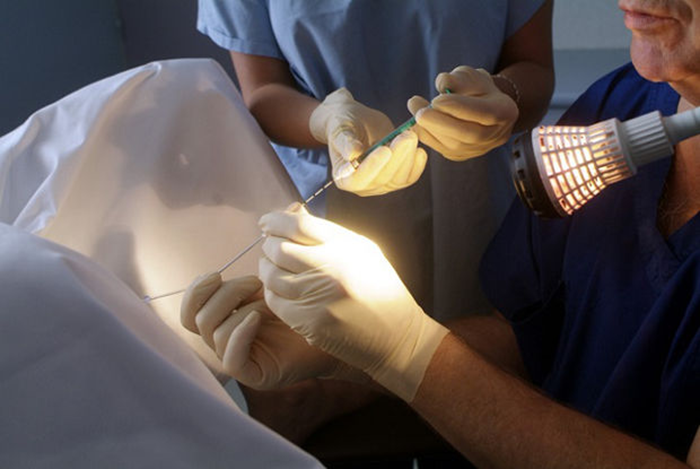
The implanted embryos are constantly monitored. Woman donating blood for determination hCG levels, progesterone. This must be done on strictly allotted days: 1, 7 and 14 days after replanting. It is possible to judge the success of IVF only after the analysis of hCG, carried out on day 14.
If the pregnancy is normal, the woman does not need constant medical supervision. Visits to the antenatal clinic are carried out, as in normal pregnancy.
For implantation to be successful, a woman must adhere to certain recommendations for IVF. How many embryos are implanted does not matter:
- For the first 10 days, exclude any physical activity. Bed rest is not necessary, it is important to exclude sudden movements, intensive walking, lifting heavy objects, and so on. This is the most important time for the engraftment of the embryo.
- Adhere to all medical recommendations.
- Sexual intercourse in the first 3 months after IVF is not recommended, however, everything is decided with a specialist on an individual basis.
- Daily measurement basal body temperature. It must be measured in the same interval. If the thermometer is below 37 for several days in a row, you should consult a doctor.
- Particular attention should be paid to nutrition. Eat more protein foods. It is better to steam or boil dishes. Dairy products, natural juices, fresh fruits and vegetables, boiled meat and fish, rosehip infusion - healthy foods in this period.
How is the endometrium prepared for embryo transfer?
Before embryo transfer, it is important to prepare the endometrium. Indeed, otherwise, engraftment will not take place.
A woman is prescribed progesterone preparations and other drugs that prepare the uterus and endometrium for embryo transfer. Before implantation, the endometrium is amenable to such changes:
- The mucosa thickens, becomes looser. The villi of the endometrium, gently enveloping the embryo, become a protective blanket for it.
- The number of blood vessels increases. The body is preparing for the fact that the supply of blood and nutrients will soon increase.
- The endometrium stores nutrients necessary for the development of the fetus.
What happens after the transplant?
The embryo transfer procedure takes about 5 minutes. On the same day, the woman will take blood for hormones. Since all modern IVF centers provide support in the early stages of pregnancy. Doctors will need the level of estradiol and progesterone in the future.
Be sure to assess the condition of the uterus and ovaries using ultrasound. An important role is played by the thickness of the endometrium. Against the background of ovarian stimulation during IVF, large cystic formations often occur. An experienced doctor can see the onset of ovarian hyperstimulation syndrome (OHSS). This is one of the most formidable complications of IVF.
The first 14 days after the transfer, outwardly, women do not notice any manifestations. However, processes are seething in the uterus that contribute to the fixation of the fetal egg. Only after this, the in vitro fertilization procedure can be considered successful.
You can learn about the successful fixation of the embryo only after the analysis of hCG, which is carried out two weeks after the embryo transfer.
Important! Do not attempt pregnancy tests before day 14. In this case, they are not informative and will only undermine the woman's psycho-emotional state with a negative result.
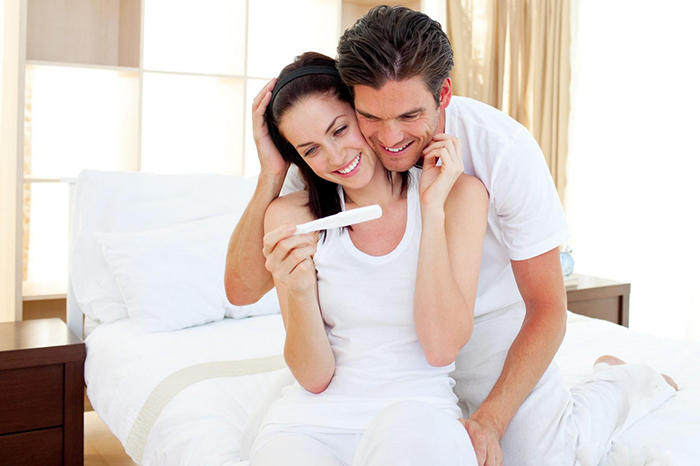
The first 14 days a woman should monitor her condition. The main thing is not to miss the OHSS. You should immediately consult a doctor if you experience the following symptoms:
- puffiness;
- persistent headache;
- intense pain in the ovaries and uterus;
- visual impairment, which manifests itself in the form of a veil or flies before the eyes.

The development of OHSS occurs gradually. With timely treatment, the disease is quickly eliminated. That is why when the first signs appear, you should immediately contact a specialist.
What is the difference between IVF and ICSI?
Often, couples seeking IVF help hear about the ICSI procedure. What is their difference?
Conception is carried out in different ways. With in vitro fertilization, the sperm and egg, previously removed, are outside the female body. The most active sperm in vitro fertilizes the egg. However, not always the sex cells of men are able to cope with the functions assigned to them. Sperm may be unable to fertilize. There are many reasons why this can happen: the abnormal structure of the cells, the absence of strong sperm in the semen, and so on. However, reproductive technologies do not stand still and can solve this problem.
Before an embryo transfer occurs during IVF, a high-quality spermatozoon is selected by the ICSI method, which is artificially introduced into the egg. That is, the chance of fertilization is greatly increased.
This method is used in case of problems with men's health, as well as if in female body antispermal bodies are present. And also ICSI is resorted to when, during preliminary IVF attempts, pregnancy did not take place.
If the cause of infertility is in a woman, you can seek IVF help. If there are violations on the part of a man, ICSI is more effective for isolating one of the most active spermatozoa.
Why do embryos die?
Unfortunately, doctors cannot give an unambiguous answer to this question. Disappointing statistics show that engraftment of embryos in many cases does not occur. Therefore, when deciding how many embryos to transfer during IVF, in most cases, the choice stops at the number of 2 or more. At the same time, the likelihood of multiple pregnancy increases.
If the death of the embryo occurs and the pregnancy does not take place, the medical commission, which is in every IVF center, assesses the situation and gives further recommendations to the patient.
Conclusion
The in vitro fertilization procedure is a chance for those who lead a long and unsuccessful struggle for the right to become happy parents. Of course, the risk of not engrafting the embryos is high, but the chances of success are also quite high. The main thing is to follow all the recommendations of doctors, come to consultations on time and take the necessary tests.
But also women after IVF need to carefully listen to their health, especially in the first two weeks after embryo transfer. With alarming symptoms, do not hesitate and seek medical help in a timely manner.
Video: Just about IVF
The problem of infertility, according to statistics, is faced by about 5% of couples around the world. Of course, the problem is not large-scale, but it is tragic for each individual family. An effective method of treating pathology is IVF. Many patients, after completing the protocol, are interested in how it feels after IVF, how embryos develop and how to increase the chances of success. Therefore, before performing the procedure, it is recommended to collect all the necessary information in order to exclude psychological overstrain and stress.
One of the important stages of the procedure is the replanting of embryos during IVF. The process of embryo implantation cannot be influenced by external factors, so it is important to undergo a preliminary medical examination, receive medical support after IVF, as well as psychological support after IVF, and follow the doctor's recommendations in order to increase the chances of success.
General information about IVF replanting
The egg after ovulation and fertilization is covered with a protective shiny shell that retains its properties until the formation of the embryo. But after replanting during IVF, the shell should break, and the embryo should successfully gain a foothold in the endometrium.
The villi of the trophoblast of the embryo are immersed in the endometrium to a certain depth and provide reliable fixation. When optimal conditions are formed, the embryo continues further development and pregnancy occurs, otherwise the embryo is rejected and menstruation begins.
On average, with IVF after embryo transfer, they need 1-2 days for implantation, in rare cases up to 10 days. But sometimes early implantation of the embryo is diagnosed.
If during IVF after replanting optimal conditions were formed, then you can count on a positive result:
- The thickness of the endometrium is approximately 1.3 cm;
- The walls of the uterine cavity produce a sufficient amount of nutrients;
- The concentration of progesterone is above normal values.
Embryo implantation in IVF after replanting
The process of engraftment of embryos during IVF after transfer and the replanting procedure itself is an important stage in infertility therapy. Before embryo transfer, patients undergo ultrasound to determine the parameters of the cervical canal, uterus, measure the thickness of the endometrium and assess the condition of the ovaries. These examinations can be performed at the clinic "IVF Center" Volgograd.
After that, the vagina, cervix and cervical canal are treated and the specialist injects a special drug that increases the chances of successful implantation. The embryo is placed in a special syringe with a nutrient medium, it is injected into the uterine cavity under ultrasound control, then it is released.
With IVF, after embryo transfer, a woman may experience a feeling of fullness in the lower abdomen, this is a variant of the norm. Then the transfer procedure is repeated and assigned hormonal support after IVF.
The first days after replanting with IVF
The development of the embryo by day after replanting during IVF depends on the time of their transfer to the uterine cavity. For many women, the transfer of 2-3 day old embryos is recommended, since in the laboratory it is easier to culture the embryos to this stage and the viability of the embryos is higher in the natural environment, so they are transferred.
But sometimes it is recommended to replant 5-6 day old embryos, since the chance of fixing such embryos after transfer during IVF increases significantly. After all, at this stage they are ready to leave the shiny shell and gain a foothold in the endometrium.
How long after IVF does it take before implantation and pregnancy? It depends on many factors, but most often The process proceeds according to the following scenario:
- Full-fledged embryos without genetic abnormalities develop well and implant in the uterus;
- After the transfer of the blastocyst during IVF, it begins to implant into the endometrium, after the transfer during IVF, 2-3 day old embryos are in the cavity for 2 days to continue development;
- The embryo penetrates deeper into the endometrium and begins to form the placenta;
- Chorionic villi start secreting hCG;
- 2 weeks after IVF (14 days), the concentration of hCG is sufficient to confirm the fact of pregnancy, ultrasound is performed at 3 weeks after IVF.
Experts recommend performing a pregnancy test 2 weeks after IVF - not earlier. Otherwise, the patient may receive false negative or false positive results. It is impossible to change the time of embryo implantation after replanting during IVF by external factors and it remains only to wait.
What can be done after IVF to increase the chances of embryo attachment
Many women are interested in how much time passes after IVF before pregnancy and how to determine it? About a week after IVF, the embryo is fixed in the uterine cavity, but for pregnancy to occur, it must begin to form a placenta that produces hCG. It is the increase in hCG 2 weeks after IVF that allows you to confirm the fact of pregnancy. Ultrasound of the uterus is recommended to be performed at 3 weeks after IVF.
But it is worth noting that a woman can increase the chances of success after transferring with IVF:
- After embryo transfer during IVF, it is necessary to lie down for 30 minutes and rest;
- In the first weeks after IVF, it is necessary to limit physical activity;
- Psychological support after IVF is very important so that the patient feels calm and does not experience stress;
- Within a week after IVF, it is necessary to exclude sexual intercourse, although at other times after IVF, sexual relations can be resumed, there are no strict prohibitions, but experts recommend starting them only after diagnosing pregnancy;
- It is important to adhere to the right lifestyle and follow the recommendations of the doctor.
Feelings after IVF
In most cases, women do not experience any sensations after IVF. Sometimes, after replanting during IVF, patients may feel discomfort in the lower abdomen, but it quickly passes. But after IVF, a woman does not experience other sensations until the onset of pregnancy. Are there any sensations after the transfer of embryos into the uterine cavity? The answer is unequivocal. Implantation cannot be felt.
But no matter how much time has passed after IVF, all women are trying to determine possible changes in the body:
- Swelling of the mammary glands;
- Drowsiness;
- Weakness;
- mood swings;
- Nausea;
- Enhanced sense of smell.
But these sensations after IVF in most cases do not indicate the onset of pregnancy, but the consequences of using hormonal drugs. Signs of pregnancy may appear in early period or late, the main thing is not to concentrate on the sensations after IVF and keep calm. After all, a negative result is not a reason to abandon the goal, moreover, the chances of success increase with each attempt. And when you get a positive result, you should also not worry and be nervous, as this can adversely affect pregnancy.




